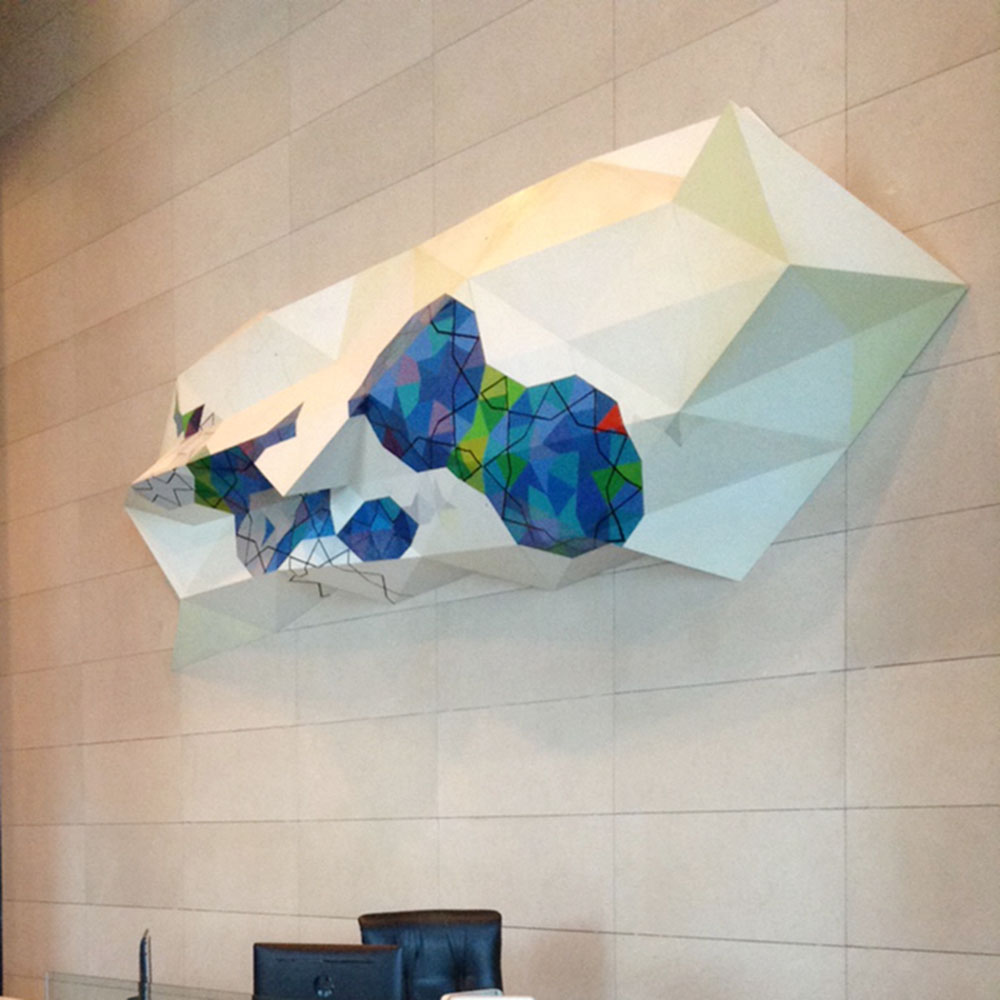Commission for the Al Bustan Complex, Abu Dhabi

I made this large wall-mounted work for the foyer of the Al Bustan Complex in Abu Dhabi. Entitled Folded cosmos, the work is almost 5 metres wide and is intended to complement the understated space in which it sits. The design reflects the long and rich history of the art of the Middle East.
The art of the Islamic world and the Middle East in particular is renowned for its sophisticated use of geometrical patterns. While Islamic art is certainly not the only tradition to employ geometric patterns, the structures to be found in that tradition have been a particular focus and carry enormous significance, particularly as a model or metaphor for the cosmos. The star motifs that are a common feature in Islamic art are a good example of this. There’s a strong relationship to the long tradition of Islamic astronomy.

Folded cosmos draws on this tradition, and also on recent discoveries such as those of the physicist Peter Lu that certain medieval Islamic tiling patterns — the girih or strapwork patterns found throughout the ancient Islamic world — anticipated modern mathematical discoveries by around 500 years. In the mid-1970s the mathematician Roger Penrose described a set of what are termed non-periodic tiling patterns — that is, patterns that do not repeat themselves in a regular fashion across the picture plane. That these patterns have since been found to have applications in fields such as the physics of crystals is testimony to the depth of geometrical knowledge held by Islamic artists as far back as 1500 C.E. — and possibly much earlier.
Both girih and Penrose tiling patterns have a property called scale invariability. That is, they can be overlaid seamlessly at differing scales. This is a property that I’ve sought to exploit, providing visual interest both at close proximity and at a distance.
